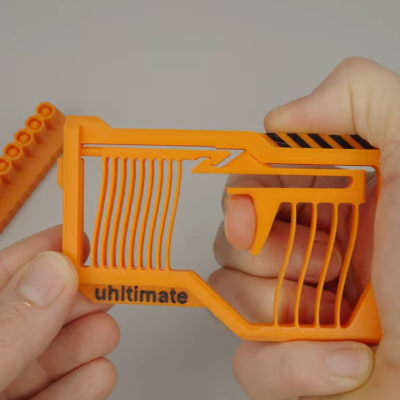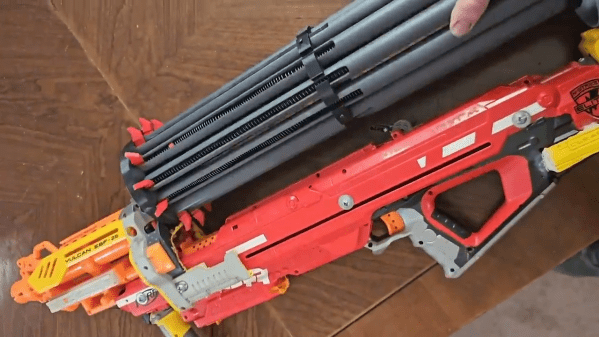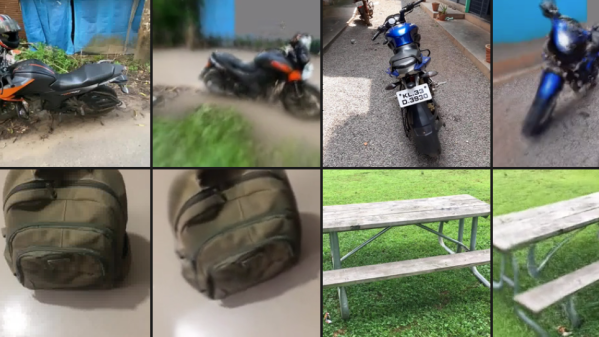For most of us, turrets that aim and shoot at things are the sole domain of video games. However, they’re remarkably easy to build with modern technology, as [meub] demonstrates. Meet the SwarmTurret.
The build is based around an existing foam blaster, namely the Nerf Swarmfire. This blaster was chosen for being easy to integrate into the build, thanks to its motorized direct-plunger firing mechanism and electronic trigger. It also has the benefit of being far less noisy and quicker to fire than most flywheel blasters.
For this build, the Nerf blaster was slimmed down and fitted to a turret base built with hobby servos and 3D printed components. The blaster is also fitted with a webcam for remote viewing. A Raspberry Pi is running the show, serving up a video feed and allowing aiming commands to be sent via a Websockets-based interface. Thus, you can login via a web browser on your phone or laptop, and fire away at targets to your heart’s content.
We’ve featured some great turrets before, like this Portal-themed unit.
Continue reading “Nerf Blaster Becomes Remote Control Turret”




















